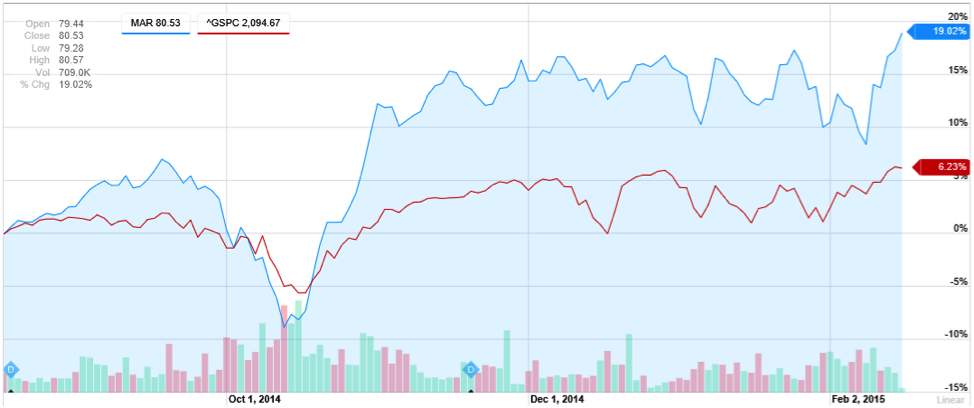Expect S&P 500 Earnings Surprise Analyst
Post on: 16 Март, 2015 No Comment

The following commentary comes from an independent investor or market observer as part of TheStreet’s guest contributor program, which is separate from the company’s news coverage.
and eddieandbill come running from marbles and piracies and it’s spring
— e.e. cummings
First-quarter 2011 earnings season for S&P 500 companies begins this week. The majority of S&P 500 companies will report first-quarter results over the next few weeks.
S&P 500 earnings per share (EPS) are estimated at $22.22 for the first quarter, representing a 12.5% increase vs. first-quarter 2010’s $19.64. For full-year 2011, the S&P 500’s EPS are estimated to be $97.54, which would represent 13.7% growth over 2010’s actual EPS of $85.81.
- Core EPS for the S&P 500, excluding financials, are forecast to rise 13.3% year over year for the first quarter to $18.34. This growth rate has slowed from the rates achieved in 2010 quarters, for which upside was driven by relatively easy comparables. Core earnings for the S&P 500, excluding financials, for full-year 2011 are estimated to improve 12.7% vs. 2010.
- Revenues for the S&P 500 are expected to increase 6.0% for the first quarter year over year. In fourth-quarter 2010, revenues were up 9.2% vs. fourth-quarter 2009.
Our Outlook for First-Quarter Earnings

We expect first-quarter results to deliver another positive earnings surprise. Positive earnings surprises were earned by more than 70% of companies in the S&P 500 in each of 2010’s four quarters, although this percentage did decelerate over the course of the year. We anticipate the number of upside surprises will fall below the 70% mark and begin to trend more toward historical averages.
- Projections of 10.5% revenue growth for the first quarter, excluding financials and utilities, appear light, given our estimates for U.S. nominal GDP. Our forecast growth for U.S. Real GDP is 3.0% for 2011. Revenue gains are expected to be disproportionately driven by higher oil and material prices.
- Margin expectations of 8.13% for the first quarter, excluding financials and utilities, are below the 8.41% level realized in fourth-quarter 2010, in part due to a normal seasonal dropoff after the holiday season. Given that margins have largely stabilized in the past two quarters, margin forecasts could be a bit overdone on the downside. Better-than-expected margins combined with a potentiality of revenue surprises could drive upside results.
- Managements’ guidance recently has increasingly reflected caution regarding the outlook for their companies, mostly in response to global events. Analysts may not have factored in all negative sentiment, which could temper upside surprises.
Given improvements in macroeconomic factors and stronger earnings from the energy sector aided by higher commodity prices, partially offset by tougher comparisons than in 2010, we believe first-quarter 2011 estimates could prove conservative and be modestly exceeded. Uncertainty in the Middle East and ongoing concern about Japan are not likely to play into first-quarter results, but will certainly be a topic investors may look for management teams to address in their outlooks.
Third Year of a Bull Market
The S&P 500 posted its second straight year of double-digit returns in 2010. For 2010, the S&P 500 returned 15.1%, and in 2009 the performance was 26.5%.
We noted previously the rarity of double-digit performance during any quarter for the S&P 500, and the index reported two such instances of total return in third-quarter 2010 (10.2%) and fourth-quarter 2010 (10.7% ).
For first-quarter 2011, the S&P 500 returned a more measured 5.9%. First-quarter performance was unique in its sector dispersion, with a large portion of the performance driven by energy.
More than 40% of the gain in the S&P 500 in the first quarter was due to outperformance from energy names. In addition, the S&P 500 hit a psychological milestone in April 2011, when it hit 1,332, which represents twice the level of the S&P 500 at its lowest point (reached in March 2009) in the most recent recession.














